Youth Care Treatment Center and school has helped teens with marijuana abuse all over the United States for 30 years. Our unique approach is based off of solid morals and beliefs to help adolescents be successful in turning their lives around.
Understanding Marijuana Abuse
Learn about marijuana abuse and substance abuse
Marijuana, which is more often known as weed or pot, is a substance that when smoked or eaten brings about feelings of relaxation, euphoria, and detachment from one’s surroundings. While many might feel that the use of marijuana is harmless, the truth is that the use of this substance can damage the overall function of one’s brain, and when children and adolescents use this substance, it can affect their neurological development. The continued use of marijuana can bring on poor lung functioning, cardiac problems, a decline in learning capabilities, difficulty using sound judgment, and impaired coordination. In addition, when individuals use marijuana and participate in activities such as driving, they place themselves and others at risk because their perception is altered. Keep in mind, however, there are treatment options for marijuana abuse.
Statistics
Marijuana abuse addiction statistics
Research has shown the over the past six years, the amount of adolescents who use marijuana has increased significantly. According to recent studies, roughly 7% of 8th graders, 18% of 10th graders, and 23% of 12th graders have used marijuana within the month prior to the collection of data. Other studies show that over 6% of high school students use marijuana daily.
Causes and Risk Factors
Causes and risk factors for marijuana abuse
Similar to the use of other illicit substances, experts have yet to determine the specific reason or reasons that some people use marijuana while others do not. Instead, it is believed that a number of factors increase one’s risk of marijuana abuse, including:
Genetic: Substance abuse and addiction is said to have strong genetic ties, tending to run in families. Children and adolescents who have relatives such as parents and siblings who abuse marijuana are more likely to do so themselves.
Environmental: Children and adolescents who spend time in an environment where marijuana is used frequently or considered acceptable are more likely to start abusing substances than those who do not live in similar environments. In addition, young individuals might use marijuana as a method of self-medicating negative emotions that come from trauma or an existing mental illness.
Risk Factors:
- Experiencing trauma
- Lack of parental involvement / poor parenting
- Easy access to marijuana
- Peer pressure
- Family or personal history of mental illness
- Early exposure to the use of marijuana
- Family history of substance use
- Personal history of using other substances
Signs and Symptoms
Signs and symptoms of marijuana abuse
The signs and symptoms that a child or adolescent might display when abusing marijuana can include:
Behavioral symptoms:
- Being overly talkative or giggly
- Slowed reaction time
- Laughing at inappropriate times
- Familial discord
- Engaging in risky behaviors
- Decreased inhibition
- Sudden change in one’s group of friends
- Participating in drug-seeking behaviors
- Possessing drug paraphernalia
- No longer participating in activities one once enjoyed
- Decreased academic performance
Physical symptoms:
- Mucus-filled cough
- Dry mouth
- Red, bloodshot eyes
- Glassy eyes
- Impaired coordination
- Appearing disheveled
- Increased heart rate
- Extreme feelings of hunger
- Excessive fatigue
Cognitive symptoms:
- Inability to maintain focus
- Learning difficulties
- Losing one’s train of thought during conversation
- Diminished motivation
- Delusions
- Paranoia
- Distorted sensory perception
- Hallucinations
- Memory loss
- Disorientation
Psychosocial symptoms:
- Agitation
- Depression
- Deterioration of one’s overall sense of emotional wellbeing
- Anxiety
- Irritability
- No longer interested in things one was once interested in
Effects
Effects of marijuana abuse
The continued abuse of marijuana can bring on a series of negative consequences. The specific consequences will vary from individual to individual based on how long he or she has been using, how much he or she has been consuming, and how often he or she does so. In addition, the age of the individual can also be a factor. These effects can include:
- Decline in physical health
- Decline in mental health
- Sleeping disturbances
- Interaction with the legal system
- Beginning to use other substances
- Irreversible memory impairment
- Decline in motivation
- Decline in academic performance
- Suspension or expulsion from school
- Impaired intellectual functioning
Co-Occurring Disorders
Marijuana abuse and co-occurring disorders
There are many cases where children and adolescents use marijuana as a means of self-medicating while they are experiencing other mental health disorders. Some of the many disorders that can co-occur with marijuana abuse can include:
- Schizophrenia
- Polysubstance use
- Conduct disorder
- Depressive disorders
- Attention-deficit/hyperactivity disorder
- Bipolar disorder
- Anxiety disorders
Effects of Withdrawal and Overdose
Marijuana withdrawal and overdose
When children or adolescents have used marijuana for a long period of time and then stop using it suddenly, it is possible for withdrawal symptoms to develop. Some of these symptoms include:
- Insomnia
- Irritability
- Anxiety
- Intense cravings








